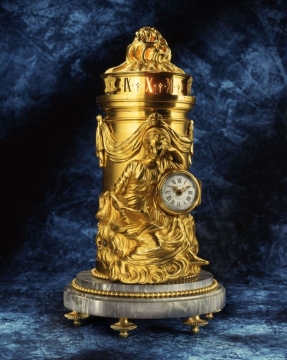Type:
Clock
Material / technique:
Gilded bronze and marble
Dimensions:
42 x 22,4 cms
Type of acquisition:
Acquired by the Heritage Fund
Year of acquisition:
1998
Depository institution:
Royal Museums of Art and History, Brussels
